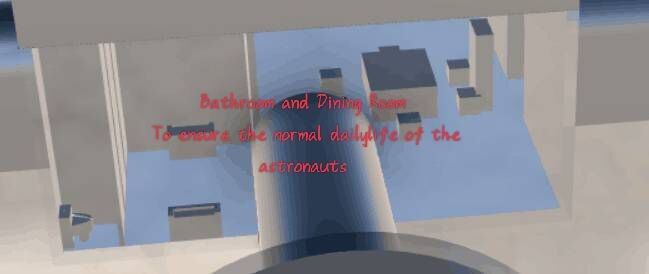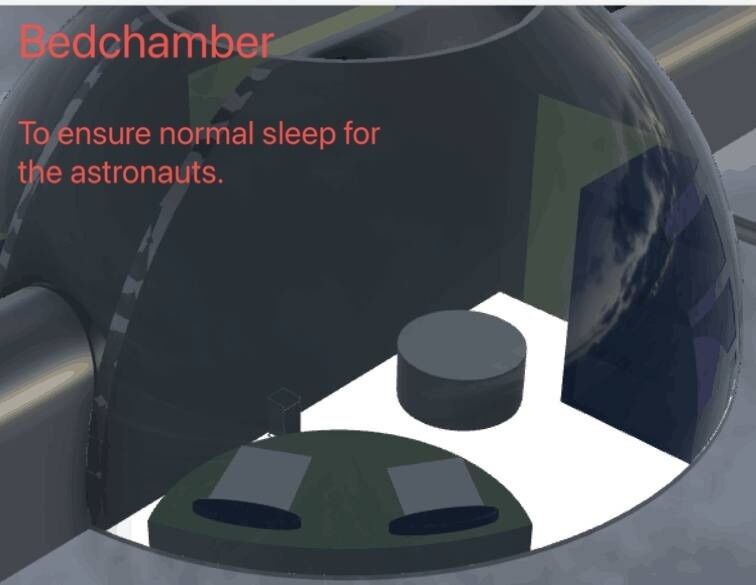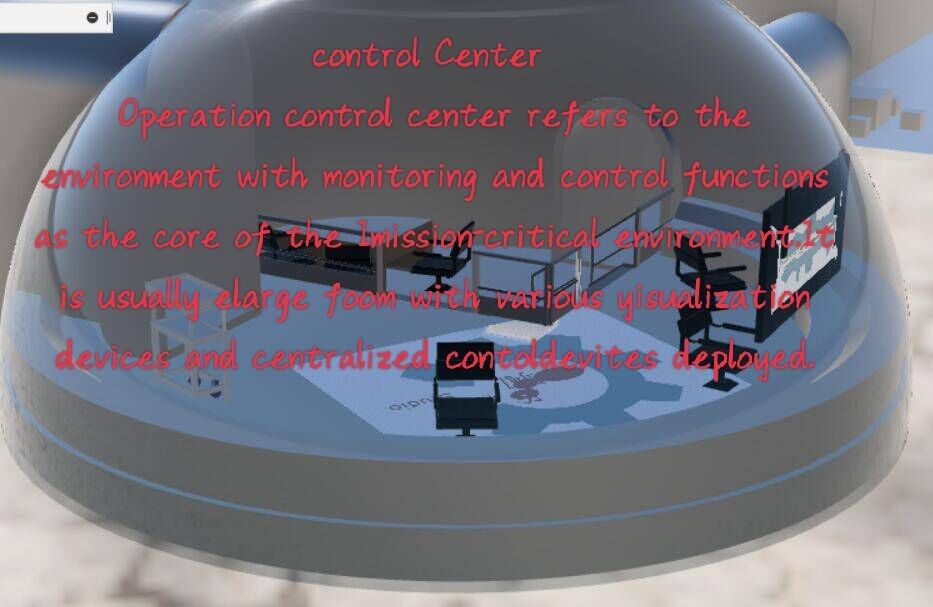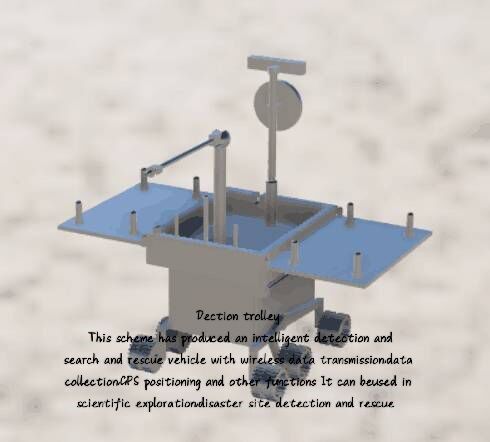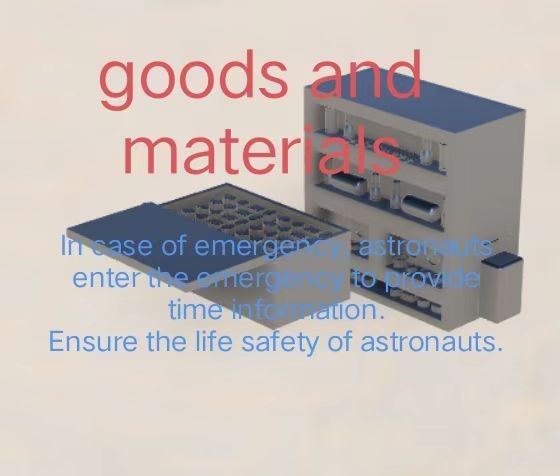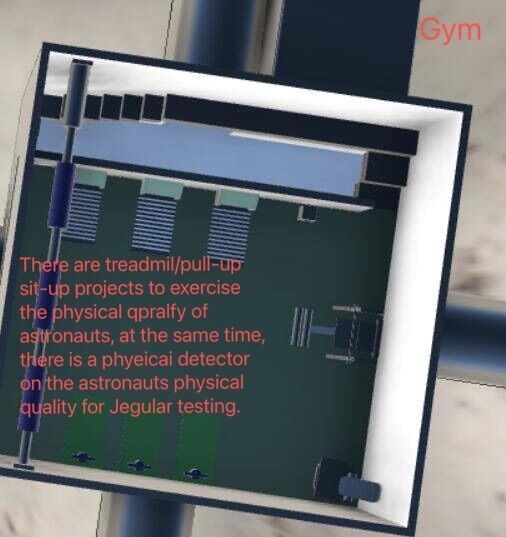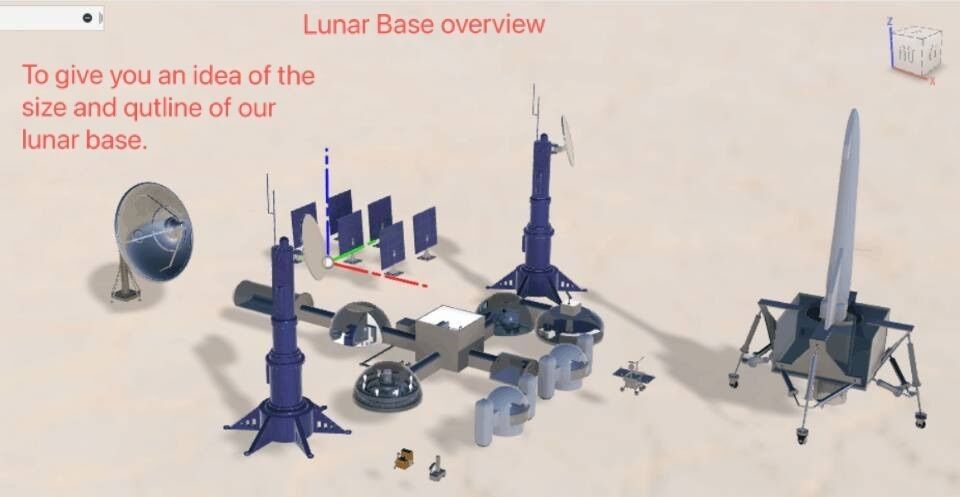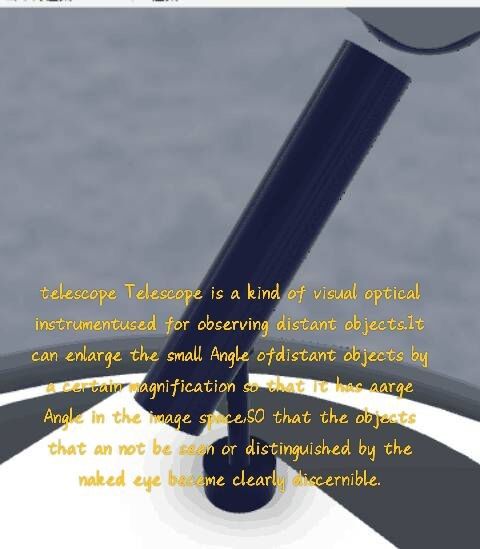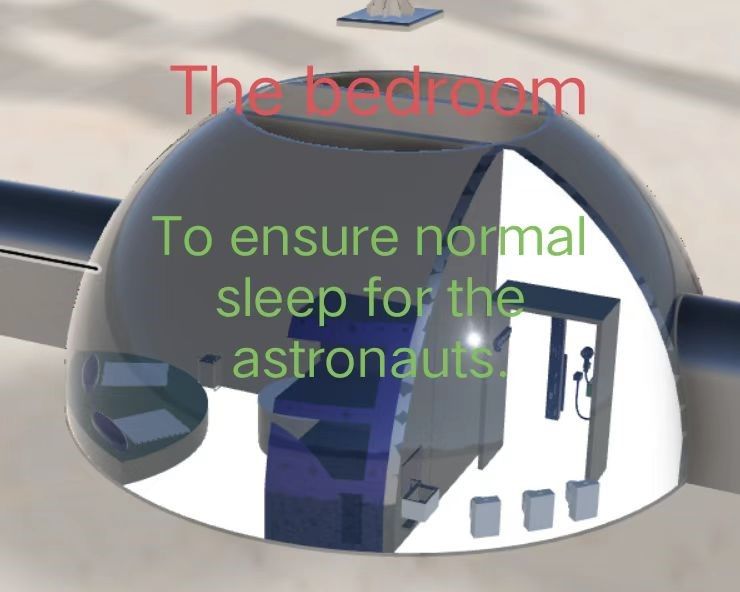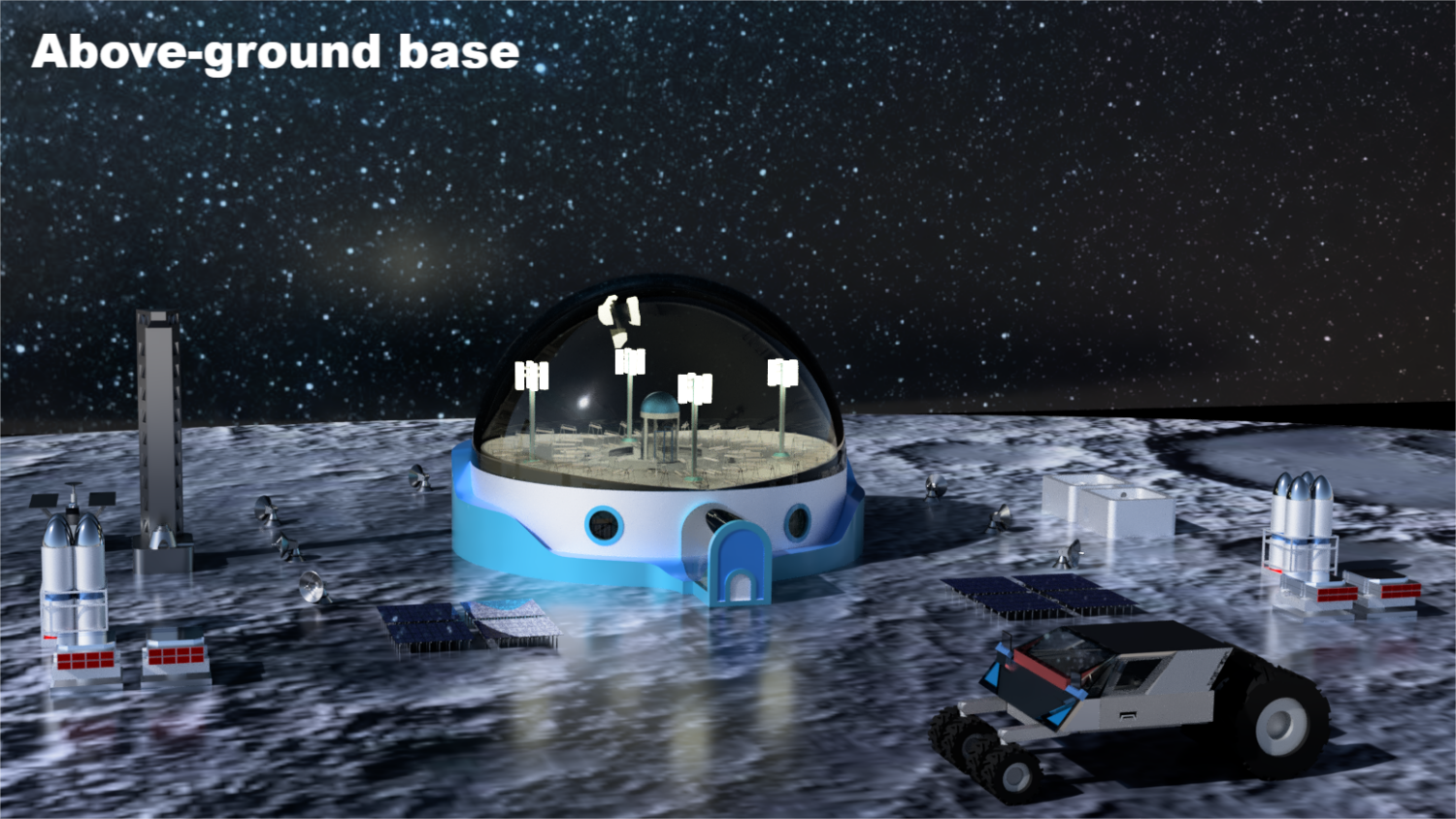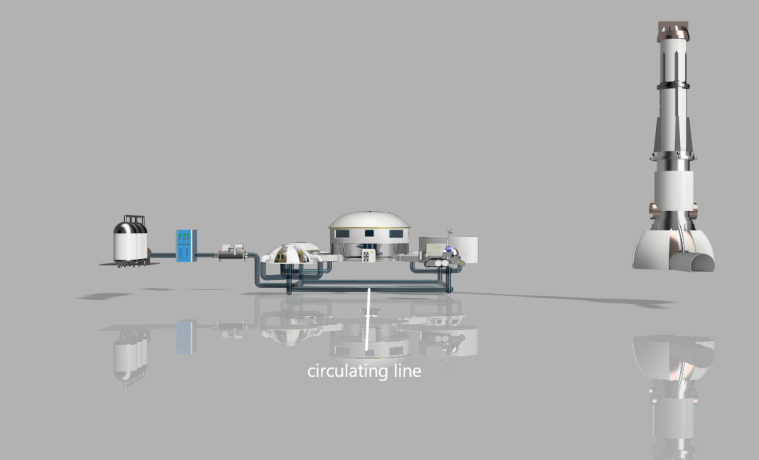Moon Camp Pioneers Gallery 2021-2022
In Moon Camp Pioneers each team’s mission is to 3D design a complete Moon Camp using Fusion 360. They also have to explain how they will use local resources, protect astronauts from the dangerous of space and describe the living and working facilities.
Team: Lunar Explorers
郑州轻工业大学 郑州 China 19 2 / 2
External viewer for 3d project
|
Project description
Our plan is to do scientific research, like lunar cultivation,to explore the differences between lunar soil and earth soil to determine whether plants can be grown, and whether there are substances in it that are good for plant cultivation; The moon camp is built on two levels to facilitate research and development of new energy sources; To study the pressures on vehicles, shelters and space suits, and the effects of oxygen supply systems on human health; To monitor changes in the lunar environment in real time and assess and mitigate the risks of lunar exploration programs. So that people can live on the moon for a long time in the future. |
|||
|
2.1 Where do you want to build your Moon Camp?
The lunar camp was built at shackleton Crater in the South Pole-Aitken Basin, with a central lunar coordinate of 89.67°S 129.78°E, a diameter of 20.92 km and a depth of about 4.2 km. Measurements taken by the Lunar Prospector probe showed that the amount of hydrogen in the crater was much higher than normal on the lunar surface, suggesting the presence of water ice. However, the albedo on the crater floor was consistent with that on the far side of the moon, suggesting that there was no exposed surface ice on the crater floor. But the presence of water suggests that hydrogen in the form of water ice could be “mined” at the bottom of the pit. Some of the pit walls are almost always under sunlight, and solar panels provide an almost constant supply of electricity in these areas. Temperatures in these regions are also more favorable than those in the lower equatorial latitudes, avoiding extremes ranging from 100° C during the day to −150° at night. 2.2 How do you plan to build your Moon Camp? Describe the techniques, materials and your design choices.
Local materials use lunar dust, soil as the material, and then use the solar energy power generation, using SLS laser sintering technology, 3 d printing base on the moon (first spread a layer of printed materials, its leveling, the material heated to near melting point, and then use the CO2 laser selective sintering of high-definition, repeat the last operation, after a layer until complete the entire model. The model can not be taken out immediately after completion. It needs to be cooled for several hours and taken out after complete cooling. Then carry machines carry, and then build robots). Use lunar geological polymer blend (a kind of similar to concrete building materials) build houses, and the moon geological polymer mixture, add urea than other common plasticizer (such as naphthalene or poly carboxylic acid salt effect is better, can reduce the demand for water, able to withstand harsh conditions of space, such as vacuum and extreme temperatures. These two factors have the greatest influence on the physical and mechanical properties of lunar surface building materials. While adding a mixture of 3D printers, a fresh sample can be easily molded and kept in shape, and can weigh up to 10 times its own weight. We took silica from lunar soil and processed it into fiberglass, which significantly increased the strength of the building material and reduced its weight. In addition, dimming materials are added to the building materials of the biological culture chamber to protect the organisms. 2.3 The environment on the Moon is very dangerous for the astronauts. Explain how your Moon Camp will protect them. (maximum 150 words)
(1) Living on the moon for a long time can cause osteoporosis. Therefore, astronauts should exercise properly every day, eat a healthy diet and get enough calcium daily from dairy products, soy products, vegetables, nuts and other calcium-rich foods. (2) The moon’s atmosphere without its natural protective ionosphere, the ozone layer, would be exposed to excess radiation. Using radiation-proof materials to create an outer shield on the moon, astronauts can also use nearby natural shielding materials, such as stacking lunar soil or weathered soil on their shelters, to reduce radiation and protect our astronauts. (3) communication problems to facilitate the establishment of contact with the Earth. We set up signal towers and reception towers. (4) Escape measures, in case of emergency how to escape astronauts. We built an emergency shelter. (5) The average day and night on the moon is about two weeks, the temperature of the lunar surface during the day can reach 127 °C, and the temperature of the lunar surface at night can be reduced to -183 °C. Using a mixture of lunar geological polymers plus urea as a building material, it can withstand extreme temperatures. |
|||
|
2.4 Explain how your Moon Camp will provide the astronauts with:
|
Water
|
Food
|
Power
|
Air
|
|
Lunar sand contains a lot of oxygen and can be used to make fresh water and oxygen. First, a forklift truck automatically excavates the sand on the surface of the moon, from which iron minerals containing oxygen are selected, and then hydrogen is used to reduce the iron minerals containing oxygen, and then fresh water can be made, providing water for our astronauts. |
In recent years, scientists have carried out extensive biological experiments on the space station, which has produced more than 100 “space plants”. Scientists have also carried out experiments on some animals, proving that weightlessness does not affect the birth of new life. Therefore, as long as lunar agriculture and breeding bases are established on the moon, the food source of astronauts on the moon is fully guaranteed. |
Laying a lot of solar panels on the surface of the moon to get a lot of solar energy, which could also be used to generate electricity; Local materials, the use of collection spacecraft to collect mineral resources. |
So if you have water, if you electrify it, you get oxygen and hydrogen. Oxygen is stored in liquid form and is readily available to the residents of the base. The hydrogen originally used as a reducing agent can be “mined” at the bottom of the pit to produce hydrogen in the form of water ice, or it can be transported from Earth to be recycled by electrolysis of the water once production begins. |
|
2.5 Explain what would be the main purpose of your Moon Camp.
The purpose of the project is to research sls sintering(Selected Laser Sintering) technology for 3D printing, building the materials needed for the base,to study lunar cultivation, to explore the differences between lunar soil and earth soil to determine whether plants can be grown, and whether there are substances in it that are beneficial for plant cultivation. The moon camp is built on two levels to facilitate research and development of new energy sources; To study the pressures on vehicles, shelters and space suits, and the effects of oxygen supply systems on human health; To monitor changes in the lunar environment in real time and assess and mitigate the risks of lunar exploration programs. |
|||
|
3.1 Describe a day on the Moon for your Moon Camp astronaut crew.
The length of day and night on the moon is about 14 days. So astronauts have different schedules during the day and night. No matter when, astronauts should keep a 24-hour work schedule on earth, sleep time up to eight hours, in the daytime, astronauts get up around seven in the morning to deal with personal hygiene, such as toilet, wash and so on. At 7:30 our astronauts cook and eat. At eight o ‘clock astronauts observed and recorded the lunar environment once. The astronauts start exercising at nine o ‘clock for an hour. At ten o ‘clock the astronauts went to the bioreactor to observe and record the growth of the organisms. At eleven the astronauts cooked and ate. At twelve o ‘clock the astronauts observed and recorded the lunar environment for the second time, followed by a half-hour lunch break. At 1:30 p.m., the two astronauts will drive the spacecraft to collect lunar soil and dust. The two astronauts will survey and collect minerals, and collect materials to the research institute for research and development of new energy sources. The astronauts return to base for a rest at 4 p.m. The five-point crew uses SLS sintering technology to get what they need using a giant 3D printer. Seven astronauts observed and recorded the lunar environment for the third time. At 7:30 the astronauts cook and eat. At eight o ‘clock the astronauts began to exercise for an hour. Nine astronauts research the development of new energy sources. The astronauts must be asleep by eleven o ‘clock. In the dark, the astronauts need to turn on the light filling device in the bio-culture chamber, as in the daytime. |
|||



